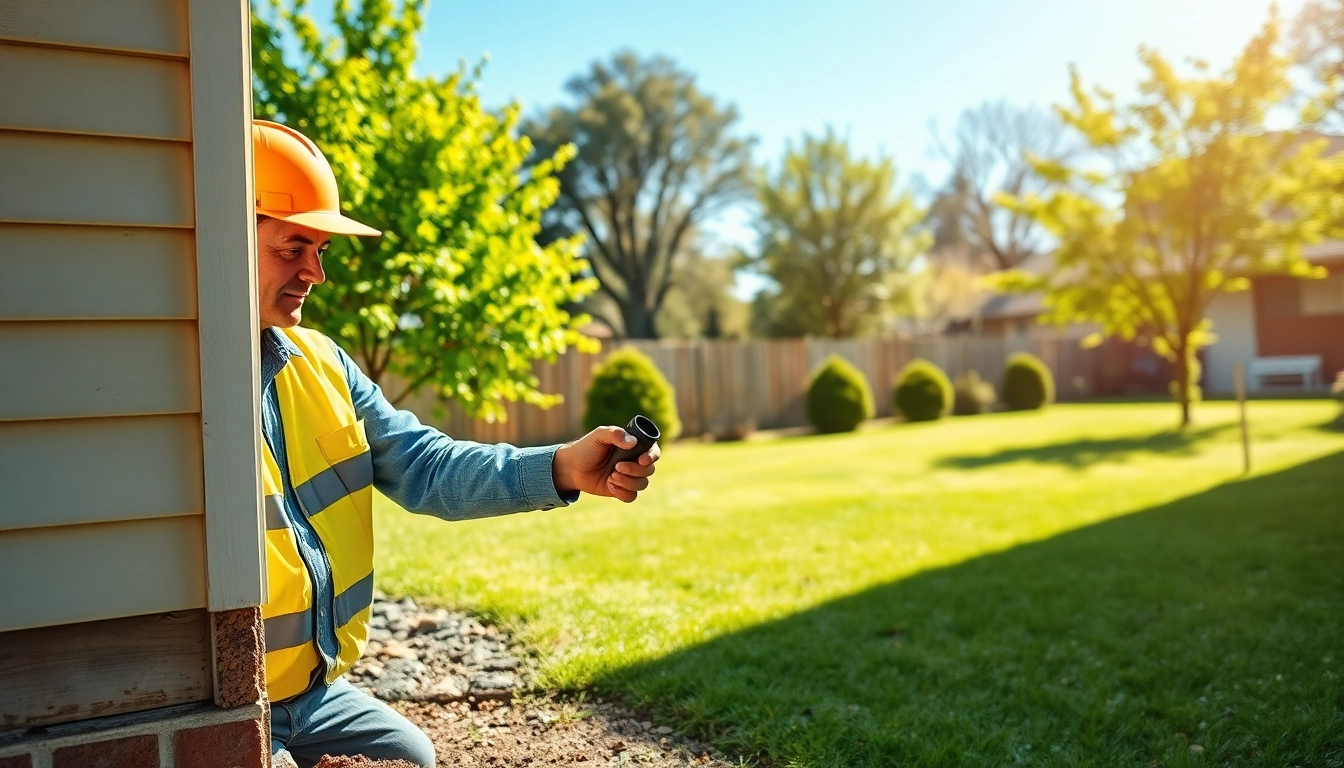Understanding Termite Inspections
What is a Termite Inspection?
A termite inspection is a comprehensive assessment of your property conducted by a certified pest control professional. The primary goal of this assessment is to identify any signs of termite infestation, check for damage caused, and potentially prevent future infestations. These inspections are crucial for homeowners, especially in areas prone to termites, as these pests can cause significant damage to wooden structures and materials in a home. For those looking to maintain their property’s integrity, termite inspections become an essential part of home maintenance.
Importance of Regular Termite Inspections
Regular termite inspections carry immense importance for homeowners. Firstly, it offers peace of mind, knowing that your home is free from these destructive pests. Additionally, early detection of termites can facilitate prompt treatment, potentially saving thousands in repairs. Termites can cause severe structural damage within a relatively short time frame, making early detection and intervention crucial. Furthermore, certain areas of homes, such as basements and attics, may be less visible and more prone to infestations, making professional inspections critical.
Common Signs of Termite Infestation
Identifying the signs of termite infestation early can prevent further damage. Common indicators include:
- Wood Damage: Hollow-sounding wood or wood that appears to be disintegrating.
- Frass: Tiny droppings resembling sawdust, often found near wooden structures.
- Swarming: The presence of discarded wings from swarmers, usually seen in spring.
- Bubbling or peeling paint: This may resemble water damage but can indicate termite activity beneath the surface.
What Happens During Termite Inspections
Step-by-Step Process of Inspections
The typical termite inspection process involves several key steps:
- Initial Assessment: The inspector reviews the property from the exterior, looking for signs of mud tubes or any wood-to-soil contact.
- Interior Inspection: They will check high-risk areas, such as attics, crawl spaces, and basements, thoroughly examining walls and flooring.
- Gathering Samples: If damage is suspected, the inspector may take samples of wood or soil for testing.
- Final Report: After the inspection, a detailed report summarizing findings, potential threats, and recommendations is provided.
What Inspectors Look For
During a termite inspection, professionals are trained to look for various signs indicating an infestation. Apart from the visible signs mentioned earlier, inspectors also look for:
- Damaged wood (like support beams and floorboards).
- Moisture sources that could attract termites.
- Signs of previous treatments or barriers that may need maintenance.
- Accessibility points that termites can exploit.
Tools and Techniques Used
Termite inspectors utilize various tools and techniques during inspections, including:
- Moisture Meters: These devices can help identify wood with elevated moisture levels, as termites thrive in moist environments.
- Infrared Cameras: Useful for spotting heat differences that can indicate hidden infested areas.
- Termite Detection Devices: Some use acoustic detectors that pick up sounds made by termites feeding.
Costs Associated with Termite Inspections
Average Pricing and Variations
The cost of a termite inspection varies based on several factors, including the property size and location. On average, homeowners can expect to pay between $75 and $325. Some companies even offer free inspections as part of their service promotion, while others may charge additional fees for reports or follow-up treatments.
Factors Affecting Inspection Costs
Several factors can influence the cost of termite inspections:
- Property Size: Larger homes require more time and resources to inspect, leading to higher fees.
- Location: Prices may vary significantly depending on regional market trends and pest prevalence.
- Inspection History: Homes that have had previous infestations may require more thorough checks, adding to costs.
Hidden Costs to Consider
In addition to upfront inspection fees, homeowners should be aware of potential hidden costs. These can include the price of repairs for any damage found or the costs associated with treatment if an infestation is discovered. It’s also wise to consider periodic follow-up inspections to ensure the problem remains resolved.
Choosing the Right Termite Inspection Service
Criteria for Selecting a Professional Inspector
Choosing the right termite inspection service is vital for ensuring a thorough evaluation of your property. Here are some criteria to consider:
- Experience and Credentials: Verify that the inspector is licensed and has experience in dealing with termite infestations.
- Reputation: Look for reviews and testimonials from past clients to gauge the quality of service.
- Service Offerings: Some companies provide additional services such as treatments and preventative measures; consider those in your decision.
Questions to Ask Before Hiring
Before hiring a termite inspection service, ask the following questions to ensure you gain valuable insights:
- What does the inspection include?
- How long will it take, and will I receive a written report?
- What are the available treatment options if an infestation is found?
- Do you have insurance, and are you bonded?
Comparing Services and Offers
When considering termite inspection services, it’s essential to compare each provider not just based on price but service scope and reputation. Look into service guarantees, warranties on treatments, and exceptional customer service experiences. These factors can make a significant difference in your experience and ensure you’re making a well-informed decision.
After the Termite Inspection: Next Steps
Interpreting the Inspection Report
After the inspection, you will receive an inspection report detailing the findings. This report often dissects the areas inspected, signs of infestation, the severity of the issue, and recommendations for action. Understanding this report is key to knowing how to proceed.
Recommended Treatment Options
If an infestation is present, the inspector will recommend suitable treatment options. These may include chemical treatments, baiting systems, or structural repairs depending on the severity and location of the infestation. Having a clear action plan is crucial to mitigating damages.
Preventative Measures Post-Inspection
After addressing any infestations, taking preventative measures can safeguard your home against future termite attacks. Recommendations may involve addressing moisture issues, ensuring proper drainage around the foundation, and regularly monitoring your home with follow-up inspections.



